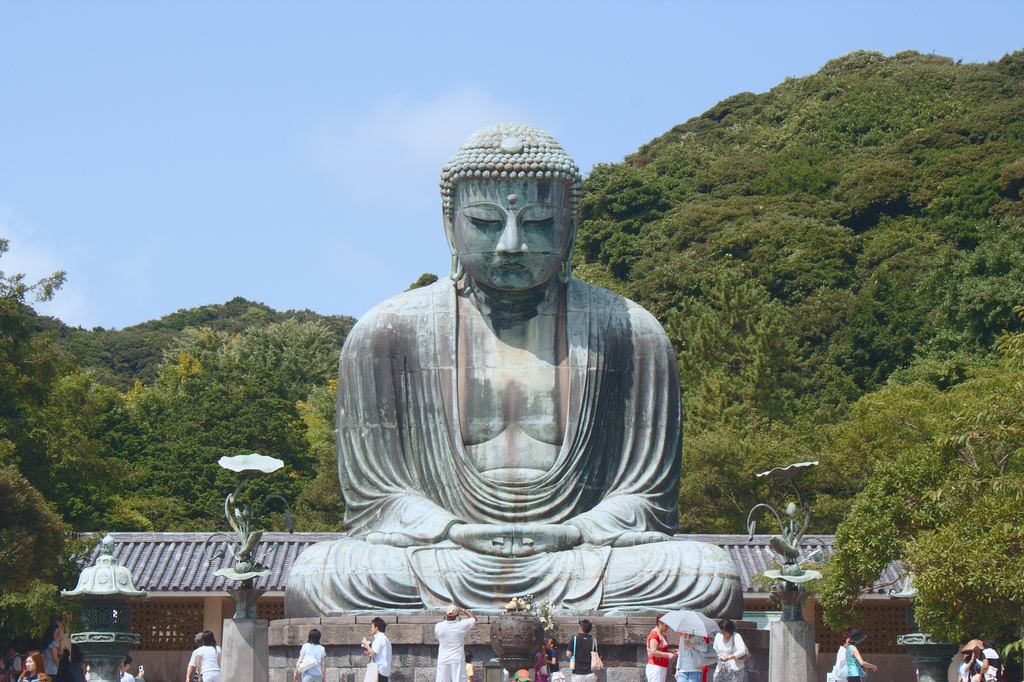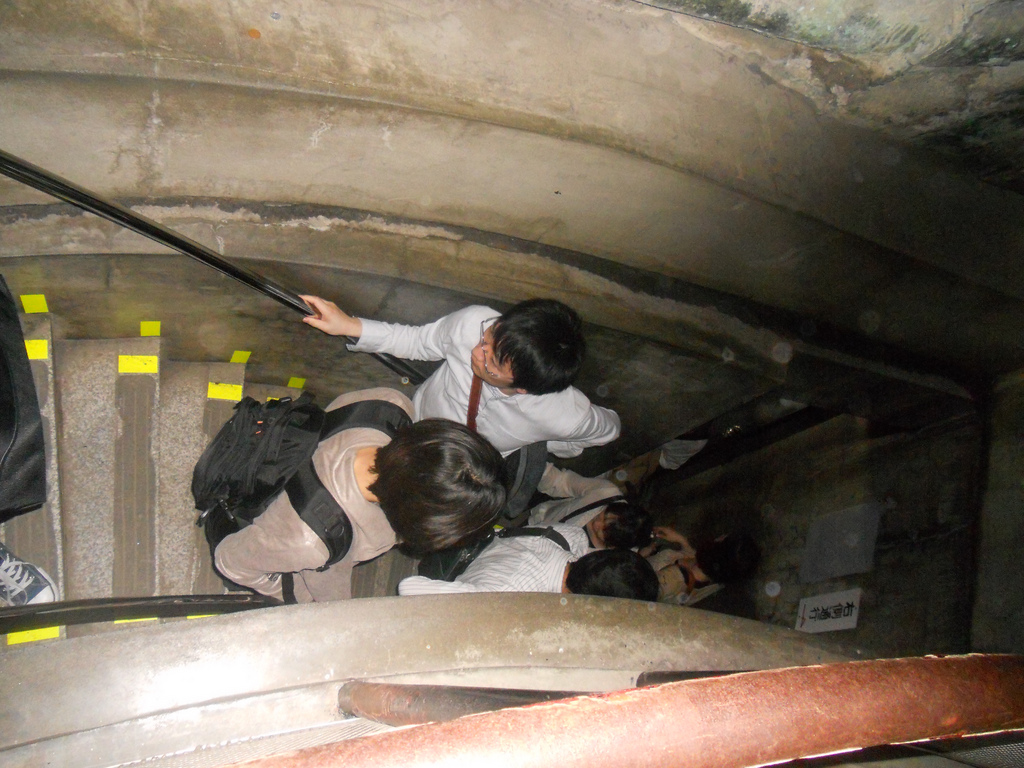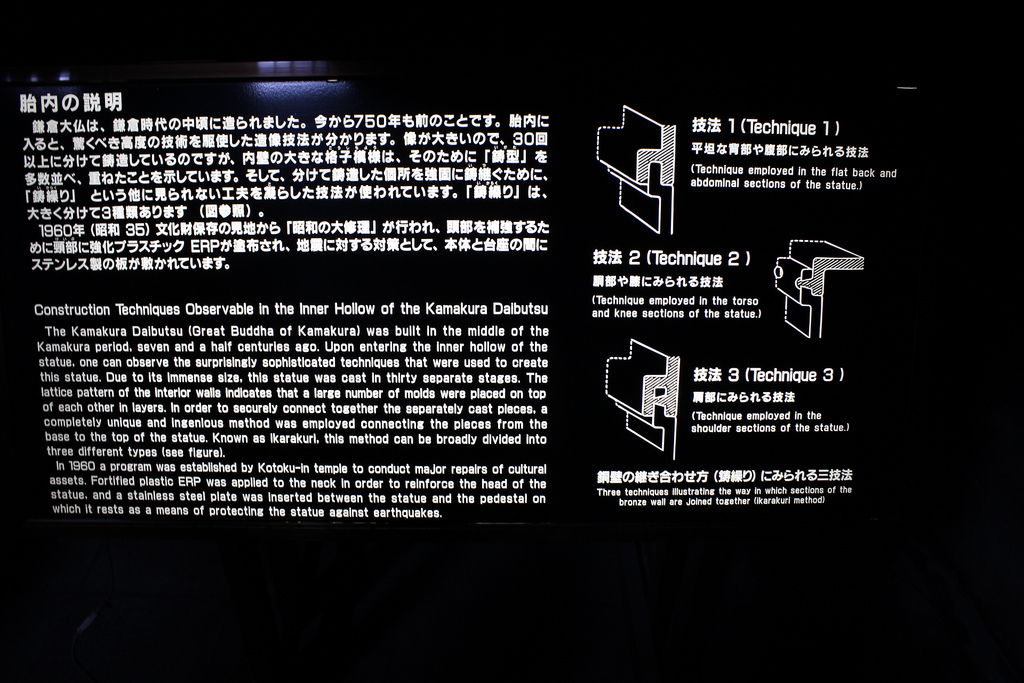An iconic travel symbol in Japan is the Great Amida Buddha referred to as the Kamakura Daibutsu. The huge bronze statue is notable for standing in the open air, and provides beautiful photo opportunities whatever the season. The statue is the main feature of Kotoku-in Temple, which belongs to the Jodo Sect. The belief of the sect is that all people, regardless of sex, class, or race, can gain protection and reach the “Pure Land” by chanting the nenbutsu prayer, making it popular among commoners in the rigidly segmented class system of feudal Japan.

Kamakura – Daibutsu
The Daibutsu was started in 1252. The artist is unknown, but the craftsmanship and assembly of the 40 sections which form it are very advanced for the time. It stands 11.3 meters (about 37 feet) tall and weighs over 120 tons. Originally it was housed in a worship hall, but that was destroyed by typhoons in 1334 and 1369, and again by an earthquake in 1498, and has been exposed to the elements ever since. It is possible to enter the statue and see the construction techniques up close.

Kamakura – Daibutsu stairs
There is little else of interest to the average visitor on the temple grounds, but the Daibutsu with its enigmatic gaze is worth a visit if you are in Kamakura. Kotoku-in is open from 8 am to 5:30 pm from April to September, or 5 pm from October to March. Admission is 200 for yen adults and 150 yen for students 6 to 12 years old. The statue costs an extra 20 yen to enter inside and can only be entered by an extremely narrow winding staircase, so impossible to enter with a wheelchair or stroller.

Construction techniques of the Kamakura Daibutsu
Kotoku-in can be reached by taking the Enoshima Electric Railway from Kamakura Station in the direction of Fujisawa to Hase Station, about 7 minutes. The temple is about 7 minutes on foot from Hase Station.
For more information: http://www.kotoku-in.jp/en/top.html
 photos by:
AlexSlocker &
woofiegrrl,
FunkBrothers
photos by:
AlexSlocker &
woofiegrrl,
FunkBrothers